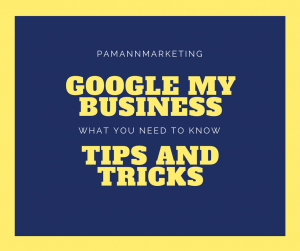
Buying an email list may seem like a great short-cut for growing your email marketing reach, but the chances of doing so successfully are small, and the potential damage is not. Here’s why.
First though, why should we even care about email marketing right now? Because email marketing, despite lacking the sex appeal of social media and even SEO, is still one of the most effective marketing techniques available. (According to Campaign Monitor, email is 6 times more likely to get a clickthrough than is Twitter. McKinsey says that email is 40 times more effective for customer acquisition than Facebook.)
With that kind of effectiveness it’s no wonder that as marketers confront the typically slow pace of organic list growth, purchasing a list looks extremely attractive. But purchased lists typically lead to problems.
Do I know you?
Even if the list you purchase is legit–meaning folks have opted in to having their email addresses shared–they haven’t opted in to having you contact them. So, your message in their inbox is viewed as an uninvited guest at best, and as a potentially malicious piece of spam at worst. That’s hardly solid ground on which to build a profitable relationship.
Rules, what rules?
You can also run afoul of regulations like the CAN-SPAM act, which prohibits many kinds of unsolicited email messages. Finding yourself on the wrong side of these regulations can have serious financial consequences as well as an negative impact on your domain name if you’re labeled a spammer.
Using a purchased or rented list will also almost certainly break the user agreement you have with your email service provider–Mailchimp, Vertical Response, Constant Contact, etc. They are all even more eager than you are to protect their standing as good email citizens, and will come down hard on you if you generate more than a small fraction of a percent of spam complaints.
(We’ve also seem ESPs suspend accounts when a large list of addresses is imported, as when moving from one ESP to another. A phone call explaining the situation is usually all that is required, but it is an example of how seriously they take the spam issue and the scourge of non-opt-in lists.
Better ways to build your list
So if we don’t want to buy a list, how do we go about building our own at something other than a glacial pace? By making your email an integral part of your overall marketing.
Don’t let the email subscription box on your website languish in a forgotten corner at the bottom of the contact page. Place it prominently on every page of your site.
Consider adding it to your email sig file, so every message you send can help you build your list.
Make it a point to invite every new networking contact you meet to join the list. Make this a company-wide policy for all customer-facing personnel–sales, marketing, customer service.
Expanding and strengthening the channels through which you ask for new subscribers is an important step. But why will anyone want to subscribe in the first place? Is there a person left anywhere in the business world who really wants more email?
The secret to building your list is providing value
In other words, you have to offer something that’s worth your prospect’s time. This is called a lead magnet. Your lead magnets need to provide real value to your target audience. They need to help solve a business problem or educate your prospective clients about ways they can improve their business.
Examples of lead magnets include informational articles, informational videos, how-to guides, worksheets, and any information that is clearly and obviously not sales material. Even if the “comparison of widgets” you produce is 100% legitimate in its research, it will be viewed suspiciously if your widget just happens to come out on top. There is a place for material like that, but they aren’t effective as lead magnets.
Of course, creating lead magnets that are truly valuable is a bit harder than the relatively easy step of creating reliable channels for finding new subscribers. But the job gets harder still. Because now that you’ve enticed your new subscribers with real value, you have to keep providing real value in order to hold their interest.
Sustained interest is they key to converting subscribers into leads and leads into customers. (Which means you should pay as much attention to your open and clickthrough rates as you do to your subscriber base.) Just because they’re not unsubscribing doesn’t mean they’re paying attention.
Digital & Social Articles on Business 2 Community(59)
Report Post




